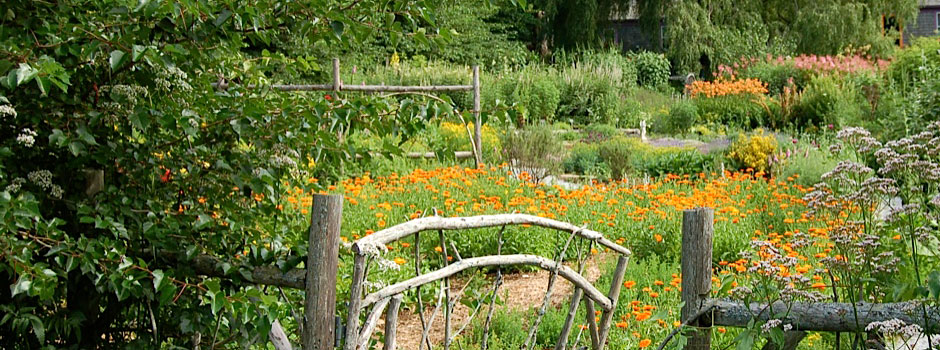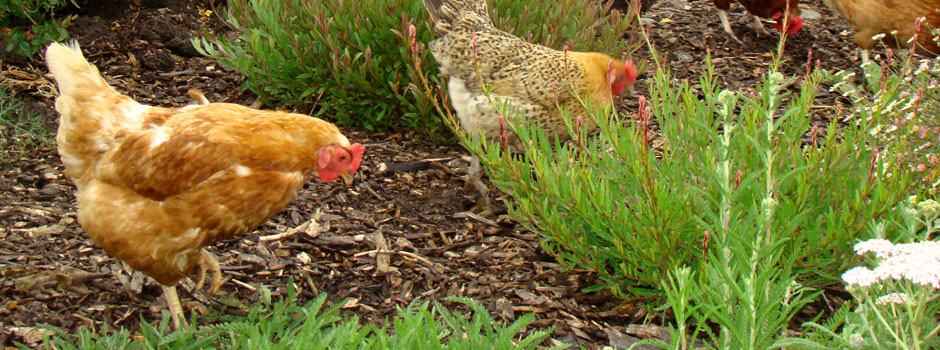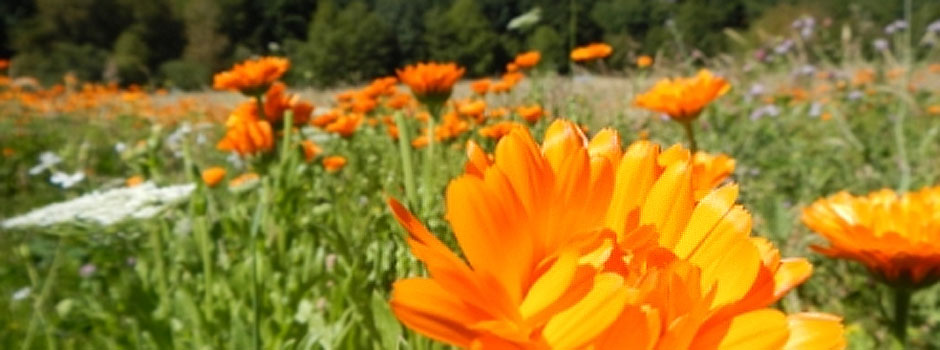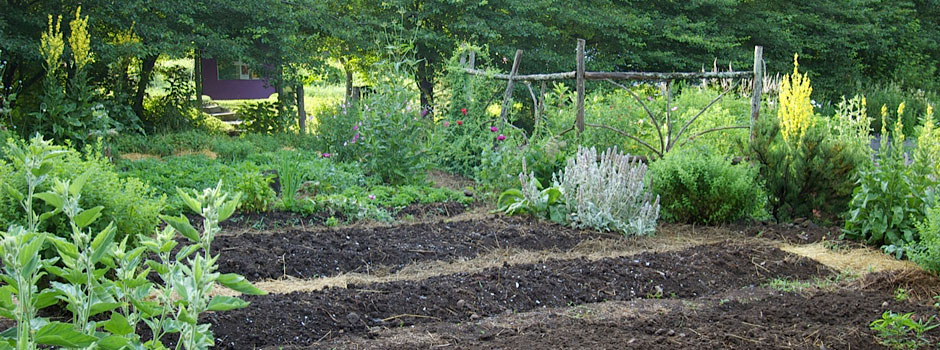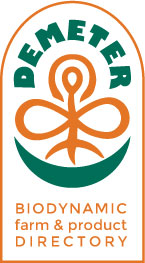“Healing people and the planet through agriculture”
Demeter's Bookshelf
Bookshelf Highlight
One Gun Ranch, Malibu: Biodynamic Recipes for Vibrant Living
A destination for international chefs and home to three types of gingers, turmeric, watermelon, a cast of animal friends, as well as Alice Bamford and Ann Eysenring, One Gun Ranch literally is a Biodynamic oasis nestled in North Malibu overlooking the Pacific Ocean. Living under the motto of "eat yourself better" Alice and Ann have been opening the minds of high profile restaurants and chefs in the Los Angeles area to Biodynamic Agriculture, and the cadence it provides for healthy living. Their inspiration is now available to everyone with the publication of their first cookbook, One Gun Ranch, Malibu: Biodynamic Recipes for Vibrant Living.
“We all have choice as consumers: we can eat mindfully, nourishing ourselves and the earth; or we can eat cheap, processed, antibiotic- and hormone-laden foods that hurt our bodies and the planet. Making delicious, nutritious decisions means reconnecting with our food: growing and sourcing it, preparing it, sharing it, and celebrating it.”
-Alice Bamford
"What I love, there’s such a sense of harmony, the ranch, everything has its place. It's that the closed loop embodies a real community throughout the ranch, from animal to alfalfa," Alice exclaims. It’s exactly that kind of synchronicity that is found in the pages of the cookbook. Biodynamic principles are approachable and the message is simple: treat food as your medicine.
Recipes are appropriate to the season and honor the 25 acres of growing space that they have cultivated to include avocado, pomegranate, citrus trees, lettuces and more while they still honor the integrity of California wild lands. Recipes include what can be foraged such as Wild Fennel, California Bay Leaf, Sage and Miner’s Lettuce. Some of the rock star recipes to seek out immediately: the chocolate brownie with a beet fruit foundation, nasturtium pesto, and grilled carrot. As Alice puts it, "I cook from the arsenal I understand. Grab what’s seasonal. Break bread with friends and family."
Books about Biodynamic Farming
Biodynamic WinesMonty Waldin, Infinite Ideas
A comprehensive guide to Biodynamic winegrowing including composting, plant teas, and farming to the lunar cycles.  Written for professional growers and home gardeners alike.  Available at: http://infiniteideas.directfrompublisher.com. Use code FALL16 at checkout, and receive a $10 discount on the purchase.
Agriculture Course: The Birth of the Biodynamic Method
Rudolf Steiner, Rudolf Steiner Press
While not for the feint of heart, this is a must read for anyone wanting to deepen their understanding of the heart behind Biodynamic agriculture.  We recommend reading this book with a group.
The Biodynamic Farm: Agriculture in the Service of the Earth and Humanity
Herbert Koeph, Ph.D., Anthroposophic Press
An essential reference book for farmers, students and anyone interested in Biodynamic agriculture.  Covers the basics of the biodynamic method with helpful details on animal feeding, crop rotations, diseases, pests, and fertilizing.
A Biodynamic Farm For Growing Wholesome Food
Hugh Lovel, Acres U.S.A.
Another basic primer that provides a great glossary of vocabulary, and has practical explanations of both the etheric realm and the mechanics of making this approach work on your farm on home garden.  This book is very easy to read.
The North American Biodynamic Sowing and Planting Calendar
Maria & Matthias Thun, Floris Books
The definitive biodynamic sowing and planting calendar showing the optimum days for sowing, pruning and harvesting various plant-crops and beekeeping.
Biodynamic Growing Guide
Brian Keats & Stefan Mager, Aracaria Guides (www.aracariaguides.com)
A laminated fold out that crams more information into 4 pages than you can imagine.  Simply describes considering nature from Goethe’s perspective, the cosmic rhythms, the sun and moon cycles, and the Biodynamic preparations.  A Biodynamic cheat sheet!
Flowforms: The Rhythmic Power of Water
John Wilkes, Floris Books
A wonderful, descriptive and visual treatise on the role of flowforms and their contribution to rhythm and flow in the water cycle.  A must read for Biodynamic farmers.
Look to the Land
Lord Northbourne, Sophia Perennis
Lord Northbourne wrote this book in 1938.¬† He developed one of the first ‚Äėorganic‚Äô estates in England, run on the Biodynamic principles espoused by Rudolf Steiner.¬† Northbourne is given credit for coining the term ‚Äúorganic‚ÄĚ from Steiner‚Äôs view of the farm as organism. This is a beautiful little book, a real valentine to farming.
Steiner Books
http://www.steinerbooks.org
Offers a really comprehensive selection of books by Rudolf Steiner and numerous other authors.  A lifetime of reading!
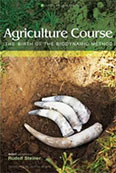 Agriculture Course
Agriculture Course
The Birth of the Biodynamic Method
Rudolf Steiner
When Rudolf Steiner gave these lectures eighty years ago, industrial farming was on the rise and organic methods were being replaced in the name of science, efficiency and technology. With the widespread alarm over food quality in recent years and with the growth of the organic movement and its mainstream acceptance, perceptions are changing. The qualitative aspect of food is on the agenda again, and in this context Steiner’s only course of lectures on agriculture is critical to the current debate.
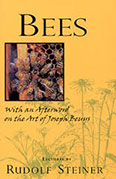 Bees
Bees
Rudolf Steiner
In 1923 Rudolf Steiner predicted the dire state of today's honeybee. He stated that, within fifty to eighty years, we would see the consequences of mechanizing the forces that had previously operated organically in the beehive. Such practices include breeding queen bees artificially.
The fact that over sixty percent of the American honeybee population has died during the past ten years and that this trend is continuing around the world, should make us aware of the importance of the issues discussed in these lectures. Steiner began this series of lectures on bees in response to a question from an audience of workers at the Goetheanum.
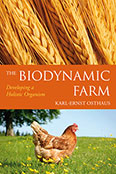 The Biodynamic Farm
The Biodynamic Farm
Developing a Holistic Organism
Karl-Ernst Osthaus
Large-scale agriculture tends to view a farm as a means for maximizing production of grain, milk, and meat. This practical book argues in favor of  holistic farming and views the farm as a living organism which is the essence of biodynamic farming.
The author, an experienced farmer, takes a down-to-earth approach to agriculture. Based on an example farm of around sixty hectares (or about 150 acres), he recommends the ideal livestock numbers: twelve cows, four horses, six pigs, ten sheep and 120 hens. This mix is drawn from Osthaus’s deep understanding of nature, animals, agriculture and the cosmos
and from his many years of personal experience as a biodynamic farmer and teacher. The result is a healthy, balanced, and sustainable farm.
This invaluable book is for anyone interested in biodynamics and for those who are considering the establishment of a farm or developing an existing conventional farm with biodynamic methods.
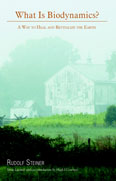 What is Biodynamics?
What is Biodynamics?
A Way to Heal and Revitalize the Earth
Rudolf Steiner
In 1924, in response to questions about the depletion of soils and a general deterioration of crops and livestock, Rudolf Steiner gave eight lectures on “the spiritual foundations for a renewal of agriculture”. Based on his suggestions and spiritual science, generations of farmers, gardeners, viticulturist, and researchers developed biodynamics as a healing, nurturing, holistic, ecological, organic, and spiritual approach to a sustainable care of the Earth.
Biodynamic methods consider the farm or garden to be a self-contained organism, embedded in the living landscape of the Earth, which is in turn part of a living, dynamic cosmos of vital, spiritual energies. The aim is to increase the health and vitality of the whole, including the farmer or gardener. The biodynamic practitioner follows an alchemical, transformative path of working with the Earth through the nine “homeopathic” preparations created by Steiner.
What Is Biodynamics? collects seven seminal lectures, four of which are on developing a spiritual perception of nature and three from his Agriculture Course, dealing with the preparations. Hugh Courtney of the Josephine Porter Institute for Applied Biodynamics contributes an informative, passionate, and visionary introduction.
Whether you are concerned with the quality of agriculture and gardening in particular or have a broader interest in the ecological crises facing us today, this book offers a transformative approach that can truly change the way we live together on Earth.
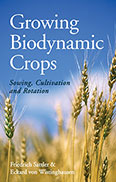 Growing Biodynamic Crops
Growing Biodynamic Crops
Sowing, Cultivation and Rotation
Friedrich Sattler & Eckard Von Wistinghausen
A biodynamic farm is an integrated, holistic organism that balances animal husbandry with growing a range of plants, crops, and trees. Balance is most important for a sustainable farm.
Growing Biodynamic Crops focuses in depth on one aspect of biodynamic farming‚ÄĒgrowing crops. It addresses all aspects of crop husbandry, from the nature of plants and issues of land use to cultivating grassland, weed control, crop rotation, seeds and sowing, and growing cereals, row crops, legumes, fodder crops, and herbs.
This is a comprehensive overview of crops and cropping for biodynamic farmers, written by experts in their field.
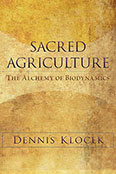 Sacred Agriculture
Sacred Agriculture
The Alchemy of Biodynamics
Dennis Klocek
"From an esoteric point of view and from Steiner’s point of view, the evolution of the Earth depends on the evolution of human consciousness. They are not separate. The ancient peoples understood that. They understood that human consciousness is woven in with the destiny and life of the Earth as a spiritual being. As a result they lived in a sacred manner. Their daily round was akin to a priesthood. They understood the relationship between the human and the divine by seeing the Earth as the mother and the sky as the father of humanity.
"It was just a given for them that nature was permeated by spiritual entities. However, that worldview had to evolve to the spot where we are today. Today the vast majority of people feel totally divorced from a real connection to the spiritual being of the Earth. The Earth primarily is a resource to be used. If you go tell your mother she is just a resource to be used, you have a lot of problems. My thesis is that the evolution of consciousness requires us to understand that our state of consciousness has an impact on the evolution of the Earth as a spiritual being." ‚ÄĒDennis Klocek
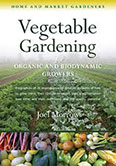
Vegetable Gardening for Organic and Biodynamic Growers
Joel Morrow
Biographies of 76 vegetables with detailed accounts of how to grow them, their climate of origin, their transformation over time, and their nutritional and therapeutic potential are identified in this book.
Joel Morrow began writing down his vegetable ''biographies'', scribbled in the margins of a planting calendar, when his first garden teacher, Margareta Leuder, ''described how as a child she had raised watermelon in the Sonoran desert in 1905.''
In the 1980’s, Joel became editor of the journal ''Biodynamics.'' In it, he began his interviews with vegetables, which have continued for 30 years. This book is the result of those ''biographies.'' As he tell us, ''Though these biographies are arranged alphabetically for convenience [from Asian Brassicas to Winter Squash], each chapter reflects my own changing point of view, depending on the date of interview. Some begin historically, some morphologically, and some so imaginatively they seem to reawaken Margareta's childhood shamanism, which became beautifully elaborated upon through Rudolf Steiner's spiritual view of nature, the foundation of biodynamics.''
This book is not only a gardening guide; it also guides the reader inwardly to perceive a vegetable as ''a work of art, a journey, and a rite of passage into the natural world.'' This book is destined to become not just a perennially useful guide, but also a favorite bedside book.
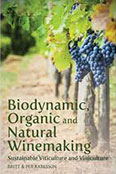 Biodynamic Organic and Natural Winemaking
Biodynamic Organic and Natural Winemaking
Britt Karlsson and Per Karlsson
"We constantly notice when we are out talking to winemakers in different wine regions that more and more producers pay attention to how what they do in the vineyard affects the environment. Many winemakers that we meet start the process of 'converting' to organic farming. There are rules for what that means -- what an organic farmer can do and what is forbidden -- rules that come both from public or government organizations and from private organizations. In addition, people also talk more and more about other related approaches: biodynamic winemaking, natural wines, sustainable farming. In this book we explain them all ."Organic farming, biodynamic wine, natural wines, sustainable winemaking: what do all these concepts really mean, and what benefits can they bring to winemakers? This comprehensive book by two renowned wine experts explains the rules, the do's and the don't's of organic, biodynamic and natural wine production, both outside in the vineyard and in the wine cellar. It sets out clearly what a winemaker is allowed to do, including processes, additives and chemicals, and looks at the potential long-term benefits of going organic or biodynamic. This is an invaluable introduction to sustainable winemaking for all wine professionals and enthusiasts. Winner of the 'Best Wine Book for Professionals 2012' in Sweden and the 'World's Best Drinks (wine) Education Book', runner-up in 2012.
Other Interesting Reading
Honeybee Democracy
Thomas D. Seeley, Princeton University Press
Did you know that bee colonies are the ultimate example of democracy in action? This fascinating book presents an impressive exploration of animal behavior and a beautiful example that decision-making can best be accomplished in groups.   Honeybees definitely know something that our congress does not!
The Inner World Of Farm Animals: Their Amazing Social, Emotional, and Intellectual Capacities
Amy Hatkoff, Stewart, Tabori & Chang
Our barnyard friends are finally given their do in this darling and heartfelt book, filled with lots of great pictures.  Enough to make this farmer into a vegetarian (almost!)
Farming and the Fate of Wild Nature: Essays in Conservation-Based Agriculture
Edited by Daniel Imhoff and Jo Ann Baumgartner, Watershed Media
Beautiful essays by Wendell Berry, Barbara Kingsolver, Michael Pollan, and more.  We really like this book because it underscores the potential of conservation-based agriculture to heal the planet.
Animal, Vegetable, Miracle
Barbara Kingsolver, Harper Perennial
After you get through this reading list, read this book as your reward!  A beautiful novel that reminds us that the road to happiness lies in living simply, eating food that we grow, and sharing our lives with the ones we love.
“We have tried to conquer nature by force and by intellect. It now remains for us to try the way of love.”
- Lord Northbourne “Look to the Land”
